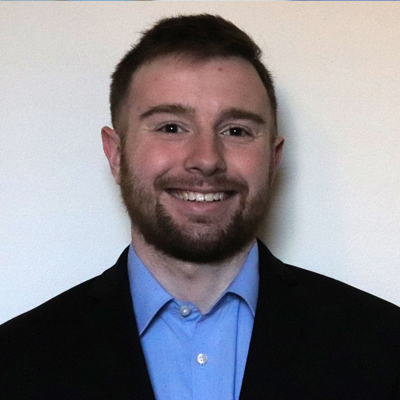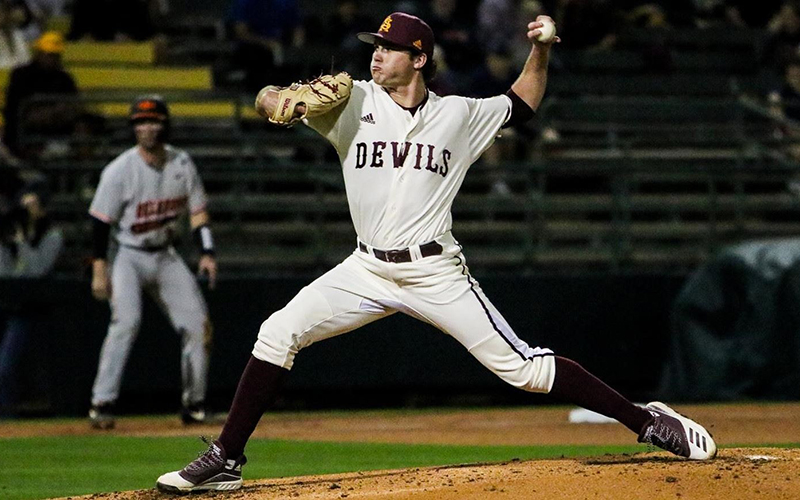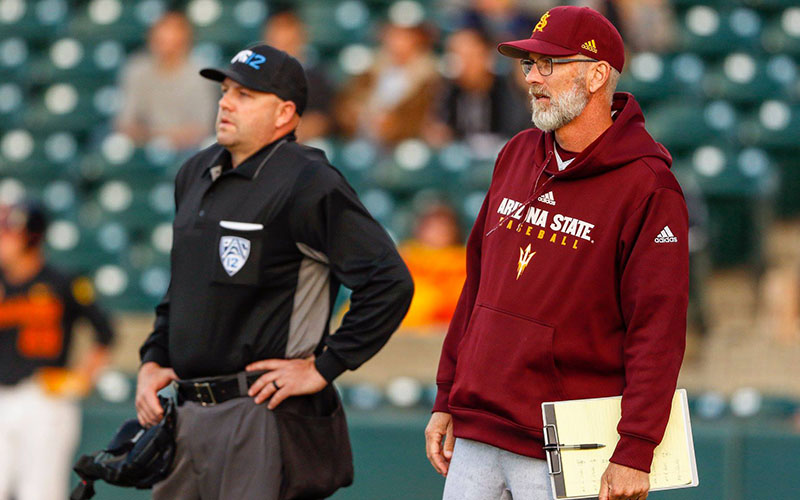TEMPE – At every level of baseball, pitcher health is a significant concern. Attention to the issue picked up steam in the late 1990s, when statistics like Pitcher Abuse Points were introduced in an attempt to quantify the health risk associated with pushing players past their limits.
Today, arm management has its own science with pitchers throwing harder and health becoming more important. But in 2021, teams face a new problem entirely. After the COVID-19 pandemic dramatically impacted the 2020 season, pitchers now head into the new season coming off a strange layoff with irregular workloads under their belts.
To this point, Arizona State coach Tracy Smith and pitching coach Jason Kelly have made it a focus to keep their pitching staff healthy. As a result, it looks to be one of the biggest strengths for the team, which opens its season Friday against Sacramento State.
“You never ask about injuries because then a coach has to comment that we’re doing great shape, and then somebody goes out that day and gets injured, man,” Smith said in a Zoom press conference. “So I gotta knock on wood the whole time we’re talking. I feel like we’re in pretty good shape on the injury front. … We’ve got a few banged up, little tweaks here and there, but other than that, we feel like we’re in pretty good shape.”
Many players credit Kelly, who was named the team’s pitching coach in June 2019. When the season was first paused back in March 2020, there was a level of uncertainty over if it was canceled for good or whether it might resume. Kelly kept the pitchers warm and on their usual in-season routines until it became clear the 2020 season would not be completed.
From there, he took something of a hands-off approach. He acknowledged that his players knew their arms better than he did, so he worked with them to create individualized plans that would work best for each pitcher.
“Everybody just kind of ran those things through me and we just made sure that they were on a slow pace to be ready when we showed up in August,” he said. “This generation, and especially our guys, they’re accustomed to taking things into their own hands. With a little bit of help from me, getting themselves to the right level of fitness, especially arm fitness, and our guys did a great job.”
Each pitcher had a different approach. Redshirt sophomore Erik Tolman, formerly a two-way player but now focusing primarily on pitching, said he combined long toss with shoulder and elbow exercises to keep his arm stronger and healthier. As he had in previous years, redshirt junior Boyd Vander Kooi turned to Driveline, a baseball training facility offering many different pitching programs.
Redshirt freshman Cooper Benson, the team’s likely Friday night starter, didn’t throw for a month once the season was canceled. After talking with Kelly, he returned to his usual routine, throwing six days a week. He focused on changeup and curveball command and has already seen significant improvements in fall and spring ball.
Lefty Justin Fall, a redshirt junior, took April, May and most of June off from throwing. He used the time to get stronger in the weight room, study his pitches and watch video. Then, when he returned for fall workouts, he learned of his move from the rotation to a bullpen role, likely as the closer. During winter break, he continued throwing and put on significant muscle.
“I’m not carrying around as much weight for five to seven innings anymore, so I put on about 10 pounds,” he said. “I’m up to like 255 right now, so I was able to do that. I think it’s translated to a velocity jump. I feel more explosive.”
Fall, who said he’s now sitting 94-97 miles per hour, wasn’t the only pitcher to see his velocity spike. Kelly mentioned freshman Ethan Long and redshirt freshmen Cam Dennie, Graham Osman and Bryce Barnett as other pitchers throwing harder than normal at this point in the year. But Kelly was also quick to add that velocity isn’t the team’s priority right now.
“Obviously we want to get better and throw as hard as we can, but we’re at the point now where we’re getting ready to go where that stuff is more of a backseat to competing and getting people out,” he said. “But I’m happy. They’ve put in the time, they’ve worked, we’ve seen good results. So it’s been good all around, I would say.”
Even beyond velocity and health, ASU’s pitching plans seem to have paid off. Both Smith and Kelly are incredibly excited by the talent and depth of this year’s staff, which is likely to feature Benson, Vander Kooi, Tolman and redshirt sophomore Trent Thornton in the rotation to start the year.
That marks a new look for the Sun Devils, who were carried by their offense in recent years. But after losing key contributors Spencer Torkelson, Hunter Bishop and Alika Williams to the MLB Draft, they hope an exciting veteran pitching staff can lead the team to Omaha.
ASU’s remaining hitters didn’t face the same offseason health challenges. Redshirt senior Conor Davis, a transfer from Auburn, was the team’s lone major offensive injury. The first baseman suffered a torn ACL during a November scrimmage. He will miss the entire season.
But redshirt junior Hunter Jump mentioned a different challenge hitters face. Since the outfielder was limited to hitting off machines all summer, he didn’t get many opportunities to face offspeed pitches until the fall.
“I think your best bet is probably just trying to see as many fastballs as you can,” he said. “Especially on live machines, like velo machines where you can get it up there, like 90-plus. Just seeing that daily or something, that helps a lot more. I think the offspeed will come.
“It’s something you want to see out of a live arm for sure, too. Machines can only do so much.”


